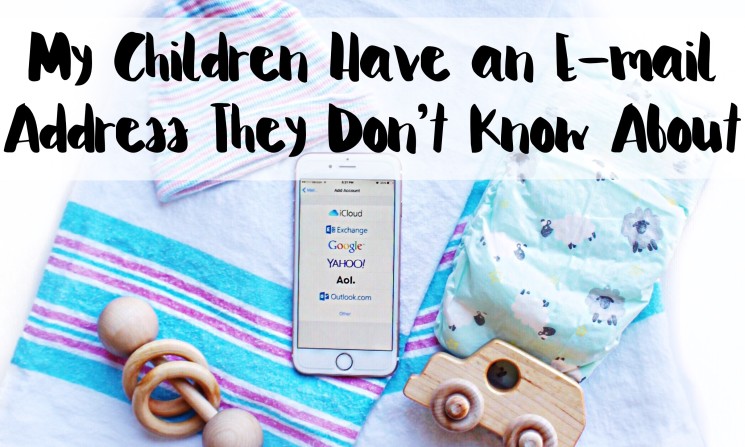Teaching kids how to listen without yelling might seem like a never-ending nightmare, but trust me, there is light on the other end of the tunnel. Active listening activities for kids are a great way to teach young kids how to listen and these activities are not only engaging but fun as well!
This post is written in the mindset of positive parenting. If you are looking to transition your parenting style into a more positive one, check out this post on positive parenting tips for tantrums (without yelling)!

Why Kids Don’t Listen
I know, I know. It is super frustrating when our kids don’t listen the first time. Or second, third, or fourth. It can be draining and our reaction might be to yell, but that really doesn’t solve anything. Yelling just heightens the emotion in the room and doesn’t get us anywhere we’d like to be.
Your kids might not listen to you for a variety of reasons. Here are some things to keep in mind when your kids aren’t listening:
-
Inquisitive Minds: Children have a boundless curiosity about the world around them. Sometimes, their fascination with new discoveries can distract them from what you’re saying. Their inquisitiveness is a sign of their eagerness to learn and explore.
-
Active Imagination: Kids often have vivid imaginations. When they seem to be in their own world, it’s because they’re engaged in imaginative play. This creativity is fantastic for their cognitive development.
-
Energetic Spirits: Children are full of energy! Their natural enthusiasm and excitement for life can sometimes make them seem like they’re not listening, but it’s just their way of expressing their vitality.
-
Short Attention Spans: Kids have shorter attention spans than adults. They’re wired to absorb information in shorter bursts. This doesn’t mean they’re not interested; they just need frequent changes in activities to stay engaged.
-
Expressing Independence: As children grow, they strive for independence. This might lead them to question or resist instructions as they begin to assert themselves and make choices. It’s a healthy part of their development.
-
Emotional Sensitivity: Kids are highly attuned to their emotions and the emotions of those around them. If they sense tension or negativity, they may become distracted. Creating a positive and supportive environment can help them focus better.
-
Learning Styles: Each child has a unique learning style. Some are visual learners, others are hands-on, and some are more auditory. Tailoring your communication to their preferred style can enhance their listening skills.
-
Overwhelm: In a world filled with stimuli, kids can sometimes become overwhelmed. When they seem distracted, it might be because they’re processing a lot of information simultaneously.
-
Repetition is Key: Children often need repetition and reinforcement to understand and remember information. Patiently repeating instructions can help reinforce your message.
-
Social Connections: Kids thrive on social interactions. In group settings, they might be more focused on their peers. Encourage positive social interactions as it’s crucial for their social development.
Remember, as adults, our role is to guide and support children as they grow and learn. By understanding these reasons why kids might not always listen and approaching them with positivity and patience, we can foster their development and create a more positive environment for everyone involved.
How to Teach Kids How to Listen
Now that you understand a little bit more why your kid(s) might not always listen to you, let’s discuss how to actually get them to listen. Good listening skills are essential for becoming a great listener and overall well-rounded human-being. Here are 15 tips for teaching your kids how to listen:
- Be a Good Listener Yourself: Children often learn by example. Demonstrate active listening when your child is speaking to you. Maintain eye contact, nod, and show genuine interest in what they’re saying. This sets a positive example for them to follow.
- Create a Listening-Friendly Environment: Choose a quiet, comfortable space for conversations and activities. Minimize distractions, such as turning off the TV or putting away electronic devices, to help your child focus.
- Use Clear and Simple Language: When giving instructions or talking to your child, use clear and age-appropriate language. Avoid using complex terms or long sentences that might confuse them.
- Maintain Eye Contact: Encourage your child to maintain eye contact while listening. It helps them stay engaged and shows that you value their input.
- Give One Instruction at a Time: Younger children may have difficulty processing multiple instructions at once. Provide one instruction at a time, wait for them to complete it, and then give the next one.
- Ask Open-Ended Questions: Encourage conversation by asking open-ended questions that require more than a simple “yes” or “no” answer. This invites your child to share their thoughts and feelings.
- Use Positive Reinforcement: Praise and acknowledge your child when they listen attentively. Positive reinforcement, such as saying, “Great job listening!” or offering a small reward, can motivate them to continue listening well.
- Practice Active Listening: Engage in activities that promote active listening. For example, you can play listening games (like the ones listed below) where your child must identify and name various sounds they hear.
- Encourage Empathy: Teach your child the importance of empathy and understanding others’ feelings. When they can relate to the emotions of others, they are more likely to listen and respond with empathy.
- Be Patient: Understand that learning to listen is a skill that takes time to develop, especially for younger children. Be patient and give your child opportunities to practice their listening skills.
- Read Together: Reading books together is an excellent way to foster listening skills. Ask questions about the story, characters, and plot, encouraging your child to pay attention to details.
- Set Expectations: Communicate clear expectations for when listening is essential, such as during school, chores, or important discussions. Explain why listening is crucial in these situations.
- Model Problem-Solving: When conflicts or misunderstandings arise, model how to listen, express feelings, and find solutions calmly and respectfully. This teaches your child effective communication and problem-solving skills.
- Be Consistent: Consistency is key in teaching any skill. Be consistent in your expectations and consequences for not listening, so your child understands the importance of active listening.
- Seek Professional Help If Needed: If you notice persistent listening difficulties or if your child struggles with attention issues, consider seeking advice from a pediatrician or child psychologist.
Remember, the best way to teach your kids how to listen is by setting a good example. Listen to them; really listen to them. The vital listening skill will come between that one tip and the following active listening activities for kids.
Active Listening Activities for Kids
With those tips in mind, one of the most fun ways to help kids learn how to listen is through active listening activities. These all serve as a fun way to help your children learn the important life skill of listening to the person who is speaking to them. All of these fun activities are simple games that almost all young children can play together to become good listeners! Some of these listening activities for kids also serve as a great way to learn social skills and communication skills, all while becoming a better listener.
Here are some creative listening activities that will help your toddlers and kids learn how to listen without yelling!
- Sound Scavenger Hunt: Create a list of specific sounds (e.g., a dog barking, a car honking) and go on a hunt to find and identify them. This is also a great idea for getting outside as a family!
-
Musical Chairs: Play a game of musical chairs where kids must listen for when the music stops and quickly find a chair to sit in. This classic game is a classic for a reason.
-
Simon Says: Play the classic “Simon Says” game where one person gives commands, but the players should only follow if the command begins with “Simon says.” You could also play the traffic light game, red light green light, in this same way. This can be done in small groups or if you are a teacher, this is a great opportunity to get the entire class engaged in learning this important skill.
-
Listen and Draw: Give verbal instructions for drawing a picture and see how closely the drawings match the instructions. If you are doing this with more than one kid, it could be a good one to turn into a fun game. Hand the paper back and forth to the next person and each child will listen and draw the next thing you tell them to. This could be a great listening activity while also a fun group activity!
-
Storytelling Relay: Sit in a circle and tell a story, with each person adding a sentence. Everyone must listen carefully to continue the story logically.
-
Guess the Sound: Play various sounds (e.g., animal noises, musical instruments) and have kids guess what’s making the sound. This is a simple listening game that can easily be done with an app on your phone or YouTube!
-
Telephone: Form a line of kids and whisper a message to the first child, who then whispers it to the next, and so on. The last child shares the message aloud to see how it changed.
-
Listen and Match: Place different objects in a bag and describe one object at a time. Kids must reach into the bag and find the object that matches the description.
-
Listening Walk: Go for a walk outdoors and listen carefully to all the sounds you hear. Discuss the sounds when you return.
-
Follow the Leader: Take turns being the leader and have the other kids follow your actions. Encourage them to listen to your instructions.
-
Emotion Charades: Act out different emotions without using words, and have kids guess the emotions by paying attention to facial expressions and body language.
-
Mystery Sound Box: Place various objects inside a box and make sounds with them. Kids must listen and guess what’s inside without looking.
-
Rhyming Game: Say a word, and kids take turns coming up with words that rhyme with it. They need to listen to the previous words to avoid repeating them.
-
Sound Memory: Place different objects on a tray and let kids study them for a minute. Cover the tray, remove one object, and have kids guess which one is missing by listening to your descriptions.
-
Listening Bingo: Create Bingo cards with pictures or words representing different sounds or items. Call out the items, and kids mark them off as they listen.
-
Nature Sound Hunt: Go outside and listen to various nature sounds like birds, insects, or leaves rustling. Talk about the different sounds you hear.
-
Instrument Matching: Play a variety of musical instruments or record their sounds. Kids must match the instrument to its sound.
-
Sound Memory Game: Create pairs of cards with matching sounds (e.g., a cat meowing). Turn them face down and have kids take turns flipping two cards to find a match by listening.
-
Describe and Find: Describe an object in detail without showing it, and kids must find it among several similar objects based on your description.
-
Listening to a Radio Show: Play an age-appropriate radio show or podcast and discuss it afterward. Ask questions to gauge their comprehension.
These listening games are not only educational but also entertaining, making it easier for kids to develop and enhance their listening skills in a playful and engaging way.
I hope these fun active listening games for kids help you teach your young learners effective listening skills that help them learn the vital skill of active listening.
For more positive parenting methods, check out my post on how to handle toddler tantrums without yelling here.







No Comments